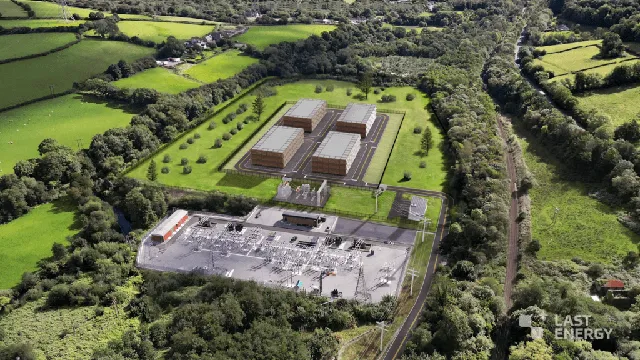
Last Energy Plans £300m Micro Nuclear Plant in South Wales
2024-10-15 19:00- Last Energy is seeking planning permission for a micro nuclear power plant in Bridgend County, Wales.
- The project will consist of four micro-modular units, expected to power 244,000 homes and create at least 100 jobs.
- The initiative represents a significant investment in local energy infrastructure and economic development.
Express your sentiment!
Insights
In Wales, an American start-up named Last Energy is planning to construct a £300 million micro nuclear power plant on the site of a former coal-fired power station. The project aims to establish four micro-modular nuclear units in Bridgend County, with the goal of becoming operational by 2027. This initiative is expected to generate sufficient energy to power approximately 244,000 homes, significantly contributing to the region's energy needs. Importantly, the development will not rely on public funding, which is a key aspect of its financial strategy. The site, which previously housed the Llynfi power station from 1951 until its closure in 1977, is currently vacant. Last Energy's proposal is anticipated to inject £30 million into the local economy and create at least 100 full-time jobs, thereby providing a boost to the local workforce. The company emphasizes that the project will not only address energy demands but also foster industrial opportunities in the area. As the UK seeks to transition towards more sustainable energy sources, micro nuclear technology presents a viable alternative to traditional energy generation methods. This project aligns with broader efforts to reduce carbon emissions and enhance energy security in the region. The successful implementation of this plant could serve as a model for similar initiatives across the country. Overall, Last Energy's plans reflect a growing interest in innovative energy solutions that can meet future demands while supporting local economies and job creation.
Contexts
The history of nuclear power development in Wales is a tale of ambition, controversy, and uncertainty. It began over 60 years ago with the establishment of the Trawsfynydd nuclear power station in Snowdonia National Park, which opened in 1968. This was followed by the construction of the Wylfa nuclear power station in Anglesey, operational by 1971. However, the journey has not been smooth; political opposition and public concern have often overshadowed the potential benefits of nuclear energy, particularly in the wake of the Cold War and subsequent environmental debates. In recent years, the prospect of a new nuclear plant at Wylfa Newydd has reignited discussions about energy security and climate change. Following Prime Minister Tony Blair's endorsement of new nuclear power stations in 2006, hopes soared for the Wylfa site, seen as a savior for the local economy. Horizon Nuclear Power's involvement in 2009 promised up to 9,000 jobs, but the project has faced significant setbacks, including a suspension in 2019 due to funding disputes between Hitachi and the UK government. Despite these challenges, local leaders remain optimistic. They emphasize the importance of community benefits and the need for a diversified energy strategy that includes not only nuclear but also marine energy projects and technological innovations. The Welsh Government continues to explore options for the Wylfa site, asserting its potential as one of the best locations for a new nuclear development in Europe. As discussions about the future of nuclear power in Wales continue, the community's hopes hinge on the successful revival of the Wylfa project. With the promise of high-quality jobs and a commitment to energy security, the stakes are high for both the local economy and the broader goals of achieving net-zero emissions.